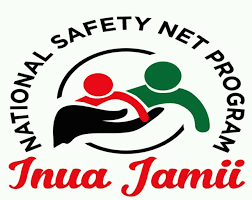𝐆𝐨𝐊/𝐖𝐨𝐫𝐥𝐝 𝐁𝐚𝐧𝐤 𝐬𝐩𝐨𝐧𝐬𝐨𝐫𝐞𝐝 ‘𝐈𝐧𝐮𝐚 𝐉𝐚𝐦𝐢𝐢’ 𝐩𝐫𝐨𝐠𝐫𝐚𝐦𝐦𝐞 𝐭𝐨 𝐬𝐭𝐚𝐲
The multi-billion GoK/World Bank Sponsored funded INUA JAMII programme is set to be remodeled and transformed to support more aspects in lives of the targeted people.
The programme, which is operated under the social protection mantra and previously branded the Kenya Social and Economic Inclusion programme (KSEIP1), will evolved to KSEIP2 in the expanded efforts to upgrade the livelihoods of beneficiaries.
“The previously only-cash transfer programme to the older people, the orphans and vulnerable children (OVCs) and people with disabilities (PWDs) will grow to a higher grade programme to further support many other aspects beneficial to the lives of the beneficiaries,” announced a senior government official, Ms. Diana Muyalah.
At an engagement forum with stakeholders drawn from government departments and the partnering private sector in Migori town, Muyalah explained that the new programme would provide social and economic inclusion services to the poor and vulnerable households and strengthen adaptive protection within all the 47 Counties in Kenya.
It will invest in cash-plus programmes across the life cycle under an umbrella programme called the Kenya Family Resilience Programme (KFRP).
KSEIP2 will also strengthen climate resilience and shock responsiveness of the social protection at policy, systems and households’ levels.
More so, KSEIP2 will crave to build on the robust social protection delivery systems supported by the ongoing KSEIP1 and invest in human capital development, enhance productivity, and strengthen resilience of the poor and the vulnerable populations.
Muyalah noted that the 5-year World Bank supported project to help GoK build socially and economically resilient families in a secure environment would kick off in January 2025 soon after the end of KSEIP1 on December 31 this year.
Otherwise, the programme will specifically focus most on scaling effective programmes, integrating innovative approaches, and enhancing institutional capacities besides providing vital support to most vulnerable populations, guided by component specific criteria with an expectation to achieve six deliverables.
The official added: “Efforts now aim to go beyond cash transfers to pilot integrated protection system that promote sustainable inclusion of the poor and vulnerable households.”
She explained that the ongoing country wide stakeholders’ consultations on KSEIP2 aimed at disclosing the forthcoming programme as per the requirement of the World Bank and capturing stakeholders and community views to inform the design and implementation of the project.
Migori County Commissioner Mutua Kisilu who graced the one- day forum asked government officials charged with implementation of donor- funded projects to do good work and ensure that the benefiting communities sustained them.
However, he wondered why Kenyans believed in and so much loved projects funded by foreign counties.
“Why should we depend so much on foreign funded projects and which otherwise we do not sustain when the funders withdraw?” posed Kisilu.
He noted that since independence, the country has received so many foreign funded programmes and projects, some which could be locally funded.
